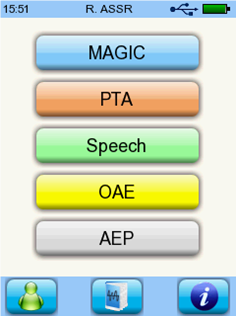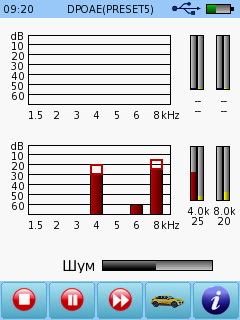 English
EnglishOne of the main advantages of Path Medical’s hearing aids is their modularity. That is, the device can be complicated by simply installing additional modules on it – in order to get additional functions, there is no need to purchase a new device. To add a new module, you just need to enter a new license key.
It is possible to test (and fully use) uninstalled modules. To do this, you need to run the DEMO mode. This mode allows you to use all the modules available on this device for the rest of the day. DEMO mode can be run 15 times.
The word “module” means not only one of the methods of hearing examination, but also the possibility of transferring data to a specialized program, connecting a printer, modem, saving audiometry results in Noah format…
The devices make it possible to carry out subjective (using psychoacoustic methods) and objective (using physiological methods) assessment of auditory function.
 Psychoacoustic modules include:
Psychoacoustic modules include:
– MAGIC (Multiple-choice Auditory Graphic Interactive Check) – picture-based tone audiometry
– PTA (Pure Tone Audiometry) – conventional pure tone audiometry
– SUN (Speech Understanding in Noise) – speech intelligibility in noise based on logatoms – sound combinations in which the consonant is in the intervocalic position.
Physiological modules include:
– TEOAE Quick – perform a TEOAE measurement using an automated statistical algorithm to detect a response.
– TEOAE Diag – perform a routine otoacoustic emission (TOAE) measurement.
– DPOAE Quick – quick evaluation, indicates the presence of a response for the selected frequencies and signal levels.
– DPOAE Threshold – assessment of hearing thresholds using OAE (otoacoustic emission) at the frequency of the distortion product using extrapolation.
– ABR – measurement of ABR (short-latency auditory evoked potentials).
– ASSR – stationary auditory evoked potentials – objective audiometry.
In addition, there are modules:
– MIRA – the ability to transfer data on studies, patient data to specialized MIRA software with the possibility of subsequent storage of the database, processing, evaluation and printing of the results





 Українська
Українська Русский
Русский